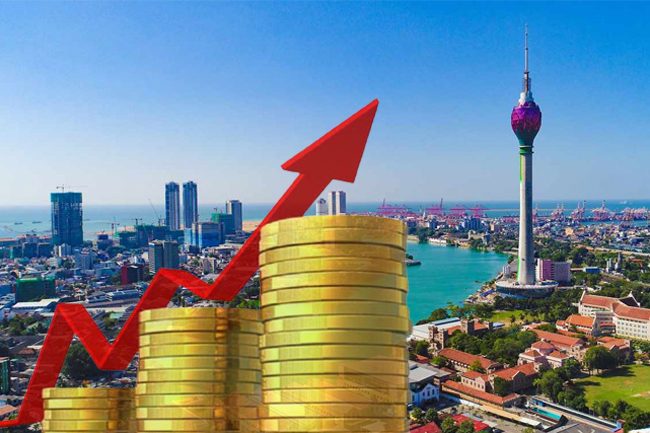The combination of today’s volatility, changing growth areas, and new technologies disrupting the global economy have given way to a more connected and discernible global-fashion consumer than ever before. As the pace of industry change accelerates, having innovative and sustainable business models is increasingly important.
Combining in-depth knowledge about the apparel industry and environmental, social, and governance topics, A. Sukumaran, Managing Director of Star Garments Group, identifies the most impactful levers toward sustainable business operations from product design, sourcing, and garment manufacturing to circular business models.
Star Garments, established in 1978, is a significant player in the Sri Lankan apparel industry. Perpetuating the highest standards, assuring timely delivery, and offering personalised customer service to various leading worldwide brands is the core competency of a team of over 8,500 resolute workers. The brand’s decades of exposure, driven by Sukumaran’s unwavering commitment make Star a partner that consumers and employees value and trust.
In more current terms, the COVID-19 pandemic has underscored manufacturing’s role in providing critical products to health, safety, national security, and the continuity of multiple industries. It has also revealed the extent to which global supply chains are exposed to shocks and disruptions. All of this has occurred at a moment when new technologies, process innovations, and demand growth are reshaping the sector worldwide. Sukumaran’s opinions on the export sector’s progress in recent years are as follows: “Prior to the pandemic, Sri Lanka’s apparel industry was on a favourable trajectory,” he annotated, “and in 2019, the industry achieved exports worth $5.3 billion, which is the largest ever recorded.” Moreover, when COVID hit in 2020, apparel exports plummeted 21.7 per cent to $4.16 billion. However, he also expressed that, based on this year, the country is well on its way to recovery as a fresh sense of urgency and new opportunities could give the sector momentum.
Is Sri Lanka’s economic growth largely dependent on exports, or is it becoming more domestically led? That’s a question economists are vigorously debating—and an important one for policymakers and executives alike. An increasing consumption- and investment-focused Lankan economy could improve the chances of more balanced trading relationships with developed economies. In consonance with Sukumaran, the apparel industry accounts for roughly 7% of Sri Lanka’s GDP and is the single most significant contributor to the country’s exports to shed light on this topic. Furthermore, the industry employs 350,000 people, with approximately twice that many individuals indirectly employed to support the 350,000-strong workforce. As a result, these direct employees account for 15% of the country’s total industrial workforce, as he puts it. He went on to say that in a country where women are underrepresented in the workforce, the apparel industry has risen to the forefront of encouraging women to be financially self-sufficient. As a result, female participation in the workforce in Sri Lanka is estimated to be at 34%.
Rerouting towards fostering sustainable development, Star is on a never-ending quest to incorporate the world’s best skills into their manufacturing process to reduce their environmental impact. It’s worth noting that they’re proud of their Product Innovation Centre, which is Southeast Asia’s first ‘Passive House Design’, utilising a rigorous set of design principles focused on ultra-high-energy performance and high levels of comfort for their staff. Moreover, Star Garments has several LEED Certified Manufacturing Facilities, the most well-known and widely used green building certification standard in the United States. Green building design and construction are graded using a point system divided into five categories: sustainable sites, water efficiency, energy and atmosphere, materials and resources, and indoor environmental quality. As a result, the group now has six LEED-certified production facilities under its roof, with two additional production facilities set to be LEED-certified in 2022, as part of a larger plan to certify all of their facilities by 2024.
Star takes pride in becoming Sri Lanka’s first entire set of clothing manufacturing factories to be certified CarbonNeutral®, adding even more significance to their sustainability path. Natural Capital Partners, the world’s largest retailer of carbon credits, has issued this certification following an exhaustive greenhouse gas evaluation of all facilities and independent verification. For that reason, Star’s total carbon footprint of 17,581.09tCO2e was offset for 2020, making the company’s whole business activity carbon neutral. With a growing dedication to the environment, Star was able to lower its carbon footprint to 14,474 tCO2e and entirely offset these emissions for 2021, allowing the company to maintain its carbon neutral status. How formidable!
The HIGG Index provides a set of instruments for standardised value chain sustainability measurement. The HIGG Facility Environmental Module (FEM), HIGG Facility Social & Labour Module (FSLM), HIGG Brand & Retail Module (BRM), HIGG Materials Sustainability Index (MSI), and HIGG Product Module is a core set of five tools that together assess the social and environmental performance of the value chain and the environmental impacts of products (PM). In this context, Star precisely sets and rates the sustainability performance of their processes using the HIGG Facility Environmental Module (HIGG FEM), as precision is essential not only for the products they manufacture but also for the environmental responsibilities they have taken on.
Growth is necessary for organisations and economies to survive and thrive, and the future of development must be both sustainable and inclusive. While getting there will be challenging, it is possible. In summary,Star Garments, backed by Sukumaran, emphasises the benefits of long-term transformation for both current and future generations. He follows the rules of sustainability, understanding the true value of its benefits on a corporate and national level. He continues to encourage businesses to unite around the concept of sustainable transformations, taking every precaution to reduce their environmental impact since they believe it is as important as any other responsibility. Star Garments Group has a single aim in mind for their action: to divert 100 per cent of industrial materials from local landfills. Looking ahead, the company believes that growth that considers its environmental impact is the only way to deliver long-term returns….as epitomised in their vision to “Be the icon of sustainability,” while dissociating their environmental footprint from their growth and increasing their positive social impact.


